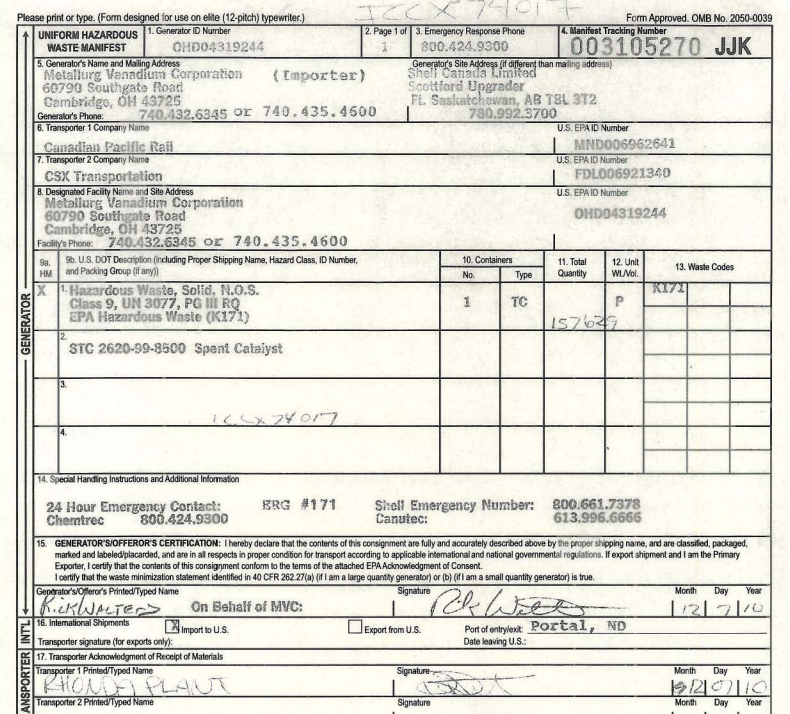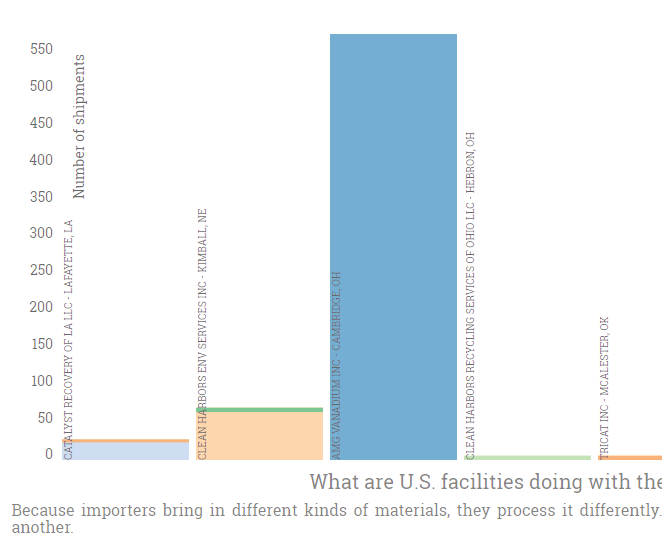We examined a few of the shipping manifests (right) and determined that the waste was often transported by two rail companies: Canadian Pacific (CP) and CSX. Using a dataset of all rail lines in Canada and Mexico, we calculated the likeliest path from Shell's facility in Canada to AMG's in Ohio. We know that the waste entered the US at Portal, ND. The path we illustrate above represents the shortest distance between the two sites, through Portal, and assumes that CP and CSX would prefer to ship over tracks they own or have rights to. Indeed, for the vast majority of this route (until Ohio), either CP or CSX own the tracks. Although in this example manifest the second transporter (CSX) did not sign off, we assume the took over somewhere around Chicago, where CP's rail network ends and CSX's begins.


